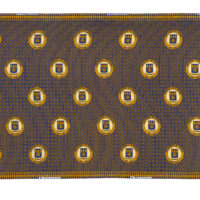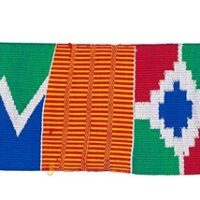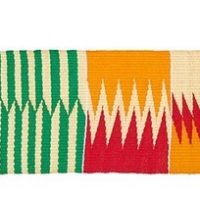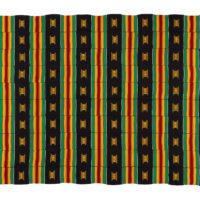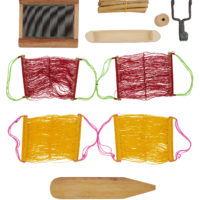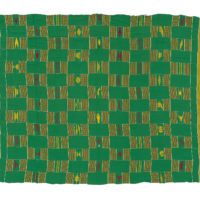
R6063 Textile; Kente
This kente cloth was made by an unknown Ewe weaver from the Volta region of Ghana. Generically known as Asidanuvor in the Southern Volta region, this translates as ‘design cloth’ and refers to the intricate motifs and animals woven into the cloth. This earlier example of kente demonstrates fine, quality weaving, when cloths were woven Read More …
